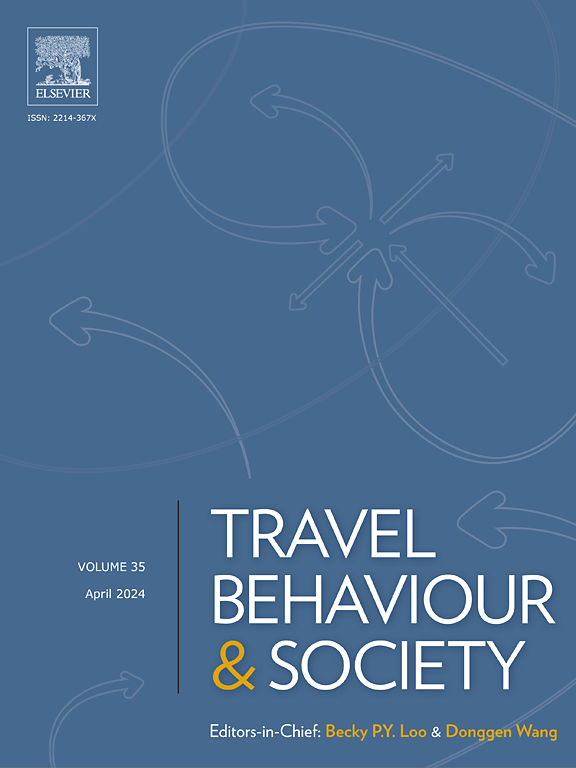Exploring physiological stress of travelling by bicycle and e-scooter in bicycle lane: A comparison study through virtual reality
IF 5.7
2区 工程技术
Q1 TRANSPORTATION
引用次数: 0
Abstract
This study examines physiological stress responses in bicycle and e-scooter users, addressing a critical gap in micro-mobility research, which has largely overlooked the psycho-physiological differences between these modes. Using an innovative experimental framework, the study integrates a multi-modal virtual reality (VR) platform with physiological sensors, enabling a safe and controlled comparison of users’ stress responses in a bicycle lane shared used by cyclists and e-scooter riders. A total of 38 participants, including children and adults, participated in this exploratory study. Mixed-effects models were employed to investigate how these micro-mobility modes influence physiological stress and how socio-demographic, environmental, and behavioral factors moderate these effects. The results support our hypotheses: (1) e-scooters generally were associated with lower changes in physiological stress than bicycles; (2) while traveling with both modes, stress responses varied across age, gender and past experiences; (3) road configurations and traffic conditions influenced stress, with age-specific effects observed; and (4) lagged speed critically impacted stress, showing divergent effects between children and adults. These findings provide valuable insights into the complex interplay between physiological stress, traffic modes, and key moderating factors that shape micro-mobility users’ experiences. Understanding these dynamics is crucial for addressing current planning and safety management challenges, particularly as micro-mobility operations continue to expand.
基于虚拟现实技术的自行车与电动滑板车在自行车道上的生理应激研究
本研究考察了自行车和电动滑板车使用者的生理应激反应,解决了微移动研究的一个关键空白,这在很大程度上忽视了这些模式之间的心理生理差异。该研究采用创新的实验框架,将多模态虚拟现实(VR)平台与生理传感器集成在一起,能够安全可控地比较骑自行车者和电动滑板车共用的自行车道中用户的压力反应。共有38名参与者参与了这项探索性研究,其中包括儿童和成人。采用混合效应模型来研究这些微流动模式如何影响生理应激,以及社会人口、环境和行为因素如何调节这些影响。结果支持了我们的假设:(1)与自行车相比,电动滑板车的生理应激变化普遍较低;(2)两种出行方式下,不同年龄、性别和过往经历的应激反应存在差异;(3)道路配置和交通条件对压力有影响,且存在年龄差异;(4)滞后速度对应激的影响在儿童和成人之间表现出不同的效应。这些发现为研究生理压力、交通模式和影响微出行用户体验的关键调节因素之间复杂的相互作用提供了有价值的见解。了解这些动态对于解决当前的规划和安全管理挑战至关重要,特别是在微移动作业不断扩大的情况下。
本文章由计算机程序翻译,如有差异,请以英文原文为准。
求助全文
约1分钟内获得全文
求助全文
来源期刊

Travel Behaviour and Society
TRANSPORTATION-
CiteScore
9.80
自引率
7.70%
发文量
109
期刊介绍:
Travel Behaviour and Society is an interdisciplinary journal publishing high-quality original papers which report leading edge research in theories, methodologies and applications concerning transportation issues and challenges which involve the social and spatial dimensions. In particular, it provides a discussion forum for major research in travel behaviour, transportation infrastructure, transportation and environmental issues, mobility and social sustainability, transportation geographic information systems (TGIS), transportation and quality of life, transportation data collection and analysis, etc.
 求助内容:
求助内容: 应助结果提醒方式:
应助结果提醒方式:


